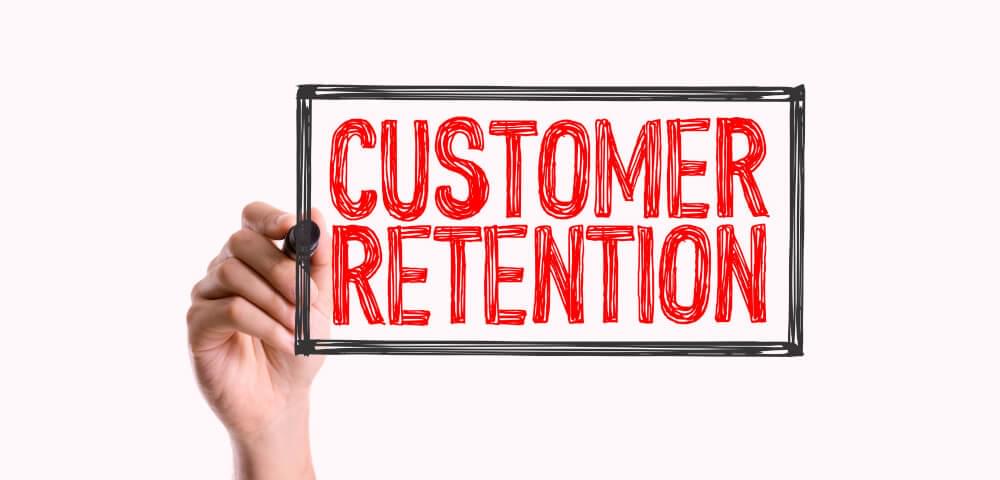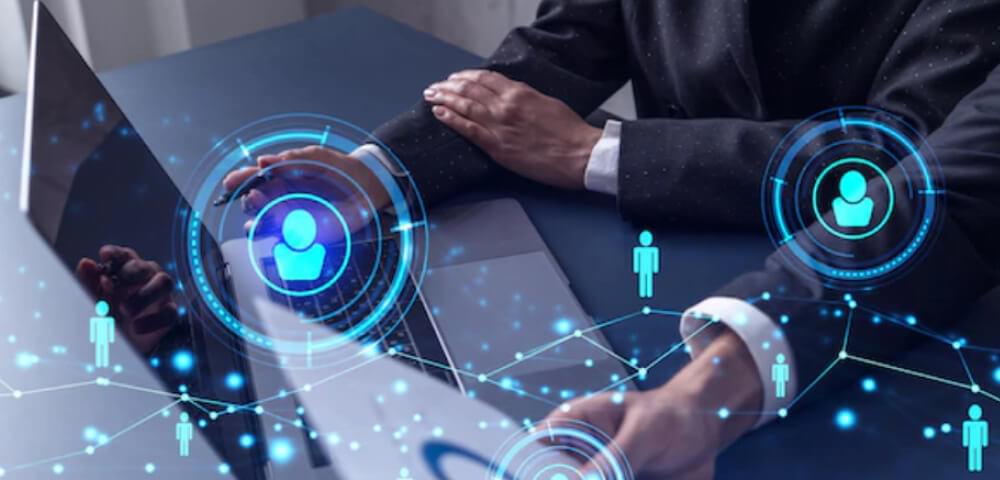
Leveraging Technology to Improve Customer Retention: Trends and Best Practices

To secure lasting success, a business must not solely focus on attracting new customers for short-term gains but also adopt strategies to maintain customer loyalty. According to Klynveld Peat Marwick Goerdeler (KPMG), customer retention strategies are pivotal in revenue growth. Businesses can employ customer retention technology using tools like artificial intelligence (AI), customer retention platforms, online communication channels such as live chat, and big data analytics. This tech empowers them to offer personalized experiences, ensuring customers are content, engaged, and committed to returning for more.
In this blog, we will discuss technology’s growing and undeniable importance in customer retention. Keep reading as we will talk about strategies to uphold the fundamental pillars of customer retention and plenty of ways in which you can employ trending technology for customer experience improvement. Let’s begin with the basics, shall we?
What Do You Mean by Customer Retention?

Customer retention is the continuous effort to maintain a strong connection between customers and your business, service, or product. Its primary focus lies in understanding individual customer needs and offering specific incentives to ensure prolonged engagement.
Customer retention holds significant importance for your businesses as it helps bypass the expenses linked with acquiring new customers. Furthermore, building and enduring healthy customer relationships increases satisfaction, trust, and continual revenue streams. You can find plenty of tried and tested customer retention strategies here. Moreover, you can utilize customer retention technology in order to implement flawless customer data analytics, loyalty programs, feedback management, and much more.
The Foundation Stones of Customer Retention
To maintain customer retention, you rely on several foundational elements:
Customer Success: Ensure customers promptly receive what they seek. For instance, if they desire a product, it should be readily available in your inventory without delays.
Customer Support: Offer continuous support from the initial interaction to ongoing product or service use. This involves prompt responses to queries, helping with product/service usage, and building relationships through active engagement.
Personalization: Design products, services, and communications according to individual customer priorities and needs. Employ personalized marketing techniques, referring clients to specific recommendations, advertisements, and support interactions.
Post-Funnel Marketing: Extend support beyond the sale, utilize client engagement technologies, and listen to customer feedback. Implement loyalty programs to reward and retain loyal customers.
The Role of Technology in Implementing Customer Retention Strategies

Enhancing customer retention involves the use of technology to enhance the overall customer experience. By providing customers with flawless online and mobile functionalities for browsing, purchases, live chats, and support services, your business can gather valuable data, gaining solid information about customer behaviors and preferences. This data-driven approach empowers your company to comprehend your customers better, trace their journey, and automate service processes, facilitating the creation of personalized marketing techniques and campaigns designed per individual customer needs. Customer retention technology is pivotal in equipping your business with the tools and insights necessary to effectively understand, engage, and retain your customer base.
How Customer Retention Technology Can Help You?

The primary benefit of utilizing technology in your business is the automation of various customer service processes. Tools like chatbots and self-service portals streamline interactions, offering efficient support to your customers. Additionally, employing data analysis tools and customer retention platforms helps forecast customer needs, enabling you to continuously enhance your products and services. With these advancements in customer retention technology, you can establish an environment that optimizes the customer experience and fosters long-term relationships, which is fundamental for sustainable business growth and success. Let’s have a quick look at some more benefits customer retention technology has to offer:
Enhanced Communication
Utilize digital tools like live chat, email, social media, and messaging apps to create personalized and timely connections with your customers. These platforms facilitate more intimate and responsive communication, ensuring customers receive relevant information effectively.
Improved Convenience
Technology offers diverse communication channels, empowering customers to engage with your business conveniently. By providing various options, your customers can access information, seek support, and make decisions at their own ease, minimizing the need for long waiting times or physical visits.
Streamlined Automation
Leverage tech tools to automate repetitive tasks such as follow-up emails, routine inquiries via chatbots, purchase tracking, report generation, and marketing campaigns. This automation minimizes resource expenditure, boosts efficiency, and ensures precision in operations.
Tailored Personalization
Utilize technology to comprehend customer preferences and use data to transform products, services, and communications accordingly. These personalized marketing techniques lead to customer experience improvement, thereby nurturing brand loyalty and retention.
Multiplied Engagement
Implement customer engagement platforms that use customer data for personalized content and offers. By understanding customer preferences and behaviors, you can create specific interactions, creating a sense of value and loyalty among customers.
Easy and Creative Customer Data Analysis
Technology equips your business with detailed insights into customer behavior, helping in data-driven decisions. This data helps refine and optimize strategies for improved customer retention and satisfaction.
Easily Applicable Customer Retention Strategies

Smart businesses deploy several core strategies to bolster customer retention, ensuring long-term relationships and sustained profitability. Here are a few you can try out today:
Employ Client Engagement Technologies
Encourage customers to actively interact with your brand through a well-devised engagement strategy across various touchpoints. Personalized content, exclusive offers, or interactive experiences via email, social media, or live chat can foster stronger customer relationships.
Provide Smooth Customer Experience
Prioritize delivering consistent and smooth customer experiences from initial contact to after-sales support. Ensure a user-friendly website interface, prompt and effective customer service, and post-purchase follow-ups to enhance overall satisfaction.
Utilizing Automated Personalized Marketing Techniques
Use analytical tools and CRM software solutions to collect and use customer data to understand feedback, preferences, and behaviors. Utilize this information to enhance engagement by designing promotions, recommendations, and communications, thus creating a more personalized customer experience.
Implementing Customer Loyalty Programs
Implement customer loyalty programs that incentivize customer return. Did you know that loyal customers tend to spend 67% more on brands they favor? Therefore, consider reward systems, exclusive packages, VIP benefits, freebies, or access to exclusive events to encourage repeat purchases and long-term customer commitment.
Top Tools of Customer Retention Technology

To maximize the benefits of customer retention technology, you need to align your goals and objectives and explore the available tools. It is important to choose the tool that best fits your needs. Here are some of the leading tech tools that can significantly contribute to improving customer retention:
Customer Data Analysis
Customer behaviors and preferences provide crucial information. If you utilize and analyze them smartly, they can potentially increase customer retention rates and reduce churn. Various tools are available to gather and analyze customer data, providing detailed insights into customer interactions. These tools include:
- Web Analytics: Platforms like Google Analytics monitor website traffic, conversions, and browsing patterns to understand user behavior.
- Customer Feedback Management and Surveys: Gathering customer opinions and sentiments offers valuable data about their choices and needs.
- Predictive Analytics: By analyzing customer data, predictive analytics tools make projections about future behavior and trends.
- Heat Mapping Tools: These tools visualize how customers navigate through websites or applications, highlighting popular sections and areas needing improvement.
- Social Media Analytics: Tracking social engagements—likes, comments, shares—provides insight into customer interactions with your brand. Additionally, they monitor brand mentions and competitor discussions to assess public sentiment.
You can use these tools effectively to gain in-depth knowledge of customer behaviors, enabling personalized strategies for improved customer retention.
CRM Software Solutions
Implementing a Customer Relationship Management (CRM) system within your operations can significantly enhance the customer experience. By consolidating customer interactions and data, a CRM system offers a unified perspective of each customer, streamlining communication across various channels. Integrating this system with chat functionalities amplifies insights, enabling a comprehensive view of individual customer journeys. This integration contributes to a deeper understanding of customer needs and choices.
Live Chat for Enhanced Customer Interaction
As online and mobile platforms become primary platforms for business transactions, deploying live chat software emerges as a trending tool for effectively connecting with and supporting customers. This technology helps in customer acquisition and increases retention. Renowned for its high customer satisfaction levels, live chat can present valuable opportunities for your business to engage meaningfully and build stronger relationships with your clientele.
AI-Powered Solutions
Utilizing AI-driven chatbots offers a smooth customer service experience by understanding human language and quickly addressing customer queries 24/7. These chatbots significantly reduce response time, eliminating the need for customers to wait for assistance. AI systems are experts at analyzing customer sentiments in text-based communication and vocal interactions, allowing them to discern moods. They can even detect facial expressions via cameras to assess sentiments.
Leveraging this data, AI systems engage with customers based on their emotions, such as entertaining a saddened customer to uplift their spirits. Integrating AI into daily operations enables personalized recommendations by employing machine learning algorithms to categorize customers according to their preferences, demographics, and location. This categorization drives AI systems to offer personalized recommendations to customers.
IoT Innovation
Internet of Things (IoT) devices offer real-time data collection, enabling your business to enhance customer services by utilizing client engagement technologies. Beacons, for example, track product interactions so you can offer immediate personalized recommendations on nearby LED screens or smartphones. For instance, if a customer selects a shampoo sachet, the beacon can trigger targeted advertising for conditioner sachets on their smartphone, increasing engagement and delivering a personalized experience.
Smart devices like IoT-powered smart-carts revolutionize retail by eliminating checkout queues. These smart-carts have cameras that automatically detect purchased products and generate the final bill. So your customer can make hassle-free digital payments, thereby enhancing their shopping experience and encouraging return visits to your shops.
Client Engagement Technologies with AR and VR
Virtual Reality (VR) and Augmented Reality (AR) offer immersive experiences that captivate customers and build engagement. AR and VR technologies provide a preview of a customer’s experience before purchasing a product or service, delivering a hands-on encounter. For instance, an online clothing retailer can utilize AR and VR to create virtual try-ons, addressing a common barrier in eCommerce where customers cannot physically try on items before purchasing. With AR and VR, you can empower customers to virtually try and experience products, mirroring the retail store environment.
Moreover, these technologies facilitate customer support by enabling remote assistance. AR and VR can virtually immerse support staff in a customer’s environment to assist them in using a product or service. Additionally, AR improves traditional product manuals by making them interactive and engaging. Through marker-based AR, your company can provide detailed product information with text, audio, and video overlays, enhancing user experience and knowledge retention.
Leveraging Big Data Analytics for Customer Demands
When customers seek products or services, it’s essential to meet their needs right away. However, you might face challenges in managing unexpected fluctuations in product demand. For example, if a particular item runs out of stock and your customer cannot find it, it can result in dissatisfaction and even a loss. Successful organizations use big data analytics to refine their demand-supply strategies to prevent such mishaps.
You can examine extensive historical data where big data analytics can show you past trends and their underlying causes. Simultaneously, it scrutinizes current market data to comprehend ongoing shifts. Combining these insights, you can predict future market trends and anticipate the demand for specific products, ensuring that you are prepared to meet customer expectations and sustain their loyalty.
Bottom Line!
As a business owner, you have a range of modern technologies at your disposal. If you use them smartly, they offer numerous chances to enhance customer retention rates, solidify long-term relationships, and refine the overall customer journey. Leveraging tools like live chat, chatbots, customer retention platforms, CRM software solutions, and instant messaging facilitates swift and efficient interactions between your team and customers. This ensures rapid problem-solving and yields valuable customer insights, creating opportunities for retaining existing customers and leading to immediate and sustained business growth.

